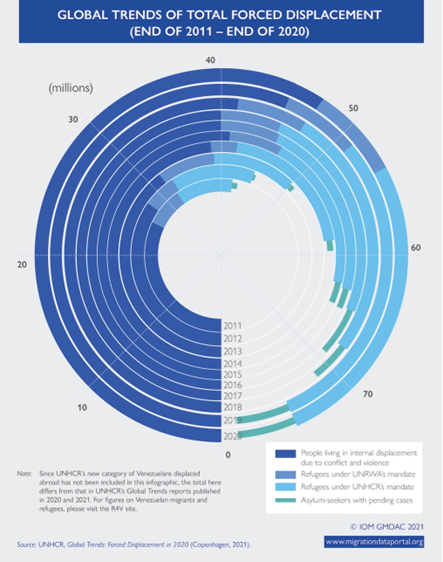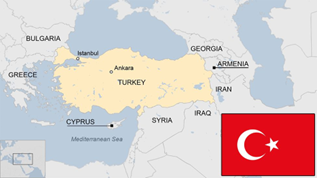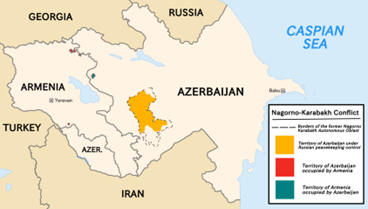Forced Migration – Migration Data Portal
Relevance
- GS 1 and 2 Social empowerment, communalism, regionalism & secularism.
- Important International institutions, agencies, and fora- their structure, and mandate.
Why in the News?
Recently, Migration Data Portal Released data for forced displacement. Forced displacement is a worldwide crisis that compels people to abandon their homes due to conflict, violence, persecution, or natural disasters. It’s a distressing reality that affects millions across the globe.
In the study of forced or involuntary migration, a distinction is commonly made between conflict-induced and disaster-induced displacement. Conflict-induced displacement is often attributed to human actions, while disaster-induced displacement is typically linked to natural events. However, these distinctions can blur in practice because conflicts may arise from disputes over natural resources, and human activity can trigger natural disasters.
Data Collection for Forced Displacement: (According to Migration data Portal)
- Countries dealing with forced displacement, whether caused by humans or nature, gather data on displaced populations using various methods, including population censuses, household surveys, border counts, administrative records, and beneficiary registers.
- At the international level, data on forced migration are collected and compiled by intergovernmental organizations (IGOs) such as the United Nations High Commissioner for Refugees (UNHCR) and the International Organization for Migration (IOM). Non-governmental organizations (NGOs) like the Internal Displacement Monitoring Centre (IDMC) also contribute to data collection efforts.
Key Trends
- Forced displacement due to persecution, conflict, violence, and human rights violations has more than doubled in the last decade, reaching a record high in 2022.
- Refugee resettlement increased in 2022, but it remains a small percentage of those in need of resettlement.
- COVID-19 had significant effects on return migration in 2020, causing disruptions.
- Internal displacement due to conflict, violence, and disasters also increased, with over 60 million new displacements in 2022, a record high.
- Disasters triggered over half of these new displacements, with floods being a prominent cause.
- Conflict-induced displacement primarily occurred in Ukraine, the Democratic Republic of Congo, Ethiopia, Myanmar, and Somalia.
Data Sources
- Data on forced displacement are collected and provided by various organizations and agencies, including UNHCR, IDMC, IOM, UNICEF, Eurostat, UNRWA, OECD, and government agencies in different countries. These sources offer statistics on various aspects of forced migration, including refugees, IDPs, asylum seekers, and resettlement.
Recent examples from Türkiye, Armenia, Syria, and Myanmar underscore the urgency and complexity of the issue.
Türkiye: Earthquakes Displace Millions
- In Türkiye, a country straddling Europe and Asia, recent earthquakes have triggered the displacement of millions.
- The UNHCR’s estimations indicate that over 5.9 million people have been displaced in Türkiye due to seismic events.
- This staggering number underscores the challenges faced by the government, humanitarian organizations, and affected communities in providing shelter, sustenance, and support for those uprooted from their homes.
Armenia and Azerbaijan: Conflict-Induced Displacement
- The ongoing conflict between Armenia and Azerbaijan has had dire consequences, leading to the displacement of thousands.
- According to the UNHCR, Armenia has over 80,000 internally displaced individuals, while Azerbaijan hosts more than 190,000 internally displaced people.
- These numbers represent the harsh realities faced by those caught in the crossfire of this protracted conflict.
Syria: A Decade of Suffering
- The Syrian conflict, which has endured for over a decade, has resulted in a staggering refugee crisis.
- More than six million Syrian refugees have sought safety in neighboring countries, with millions more internally displaced within Syria.
- This crisis emphasizes the long-lasting nature of displacement and the pressing need for sustainable solutions.
Myanmar: The Rohingya Exodus
- Myanmar’s treatment of the Rohingya people has garnered global attention. Persecution and violence have forced hundreds of thousands to flee their homes, with many finding refuge in Bangladesh.
- The Rohingya crisis spotlights the importance of not only addressing immediate displacement needs but also confronting the underlying causes, including discrimination and conflict.
A Global Responsibility
- Forced displacement is not limited to these examples alone. It is a global challenge that compels millions to seek refuge from various crises. Addressing this complex issue requires a concerted effort at local, national, and international levels.
Key Actions
- Humanitarian Aid: The provision of humanitarian assistance is paramount. It encompasses shelter, food, clean water, healthcare, and education. Nations, organizations, and individuals must contribute to these efforts.
- Long-Term Solutions: Displacement often stems from deep-seated conflicts and persecution. Sustainable solutions should focus on addressing root causes, fostering peace, and safeguarding vulnerable communities.
- International Cooperation: Forced displacement is a global issue requiring international collaboration. Countries must work together to share the responsibility of hosting refugees and supporting the nations and communities that receive them.
- Legal Protections: Upholding international laws and conventions that protect the rights of displaced individuals is essential. These legal frameworks serve as the foundation for ensuring the safety and dignity of those forced to leave their homes.
Forced displacement remains an enduring and tragic issue impacting countless lives. As the world grapples with these challenges, it is crucial to remember that behind the statistics are human stories of resilience, hope, and the unshakable desire for a better life. The global community must stand together to provide solace and build a world where everyone has a safe and secure place to call home.
|
Key Terms in Forced Migration
|
|
The United Nations High Commissioner for Refugees (UNHCR)
|
|
The Migration Data Portal (MDP) This is a free, online resource that provides access to timely, comprehensive, and reliable data on migration. It is developed and maintained by the International Organization for Migration (IOM). The MDP covers a wide range of migration topics, including:
|
Sources: Mirationdataportal, BBC, UN.
Mains Question
How can the international community address forced displacement, and what actions should be taken to provide humanitarian aid, long-term solutions, international cooperation, and legal protections for displaced individuals? Write recent examples.






